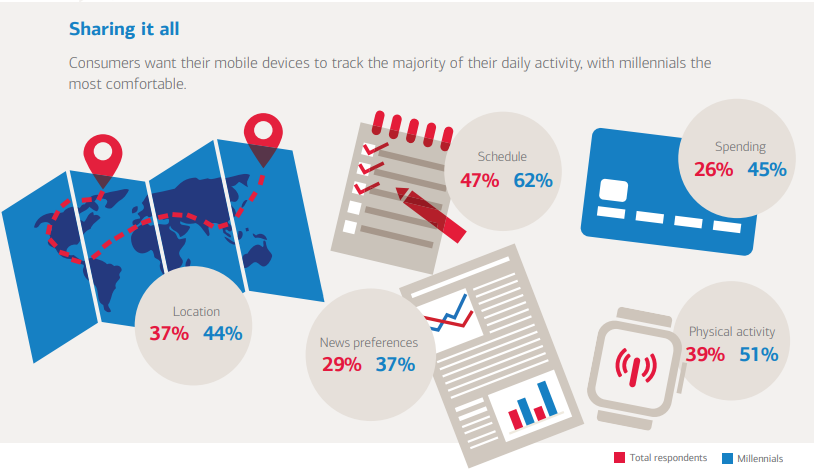Push notifications are a great thing, as they can add value to the app, and also ensure usage. App creators and marketers may rely on it too much though, and usage needs to be relevant. Confusing relevance with consumer location can further complicate matters. There may be no correlation. In addition, notifications should be viewed in context with re-targeting efforts. Notifications often serve the same purpose as re-targeting ads, which is getting people to use the app.
First the good news – being pushy hurts less
Localytics found in a survey that people’s tolerance for push notifications has gone up slightly:

(Source: Localytics)
Localytics further states that push notifications are more accepted when they are triggered by a preference stated by a user. Their research also found that 42% said they would use the app more if they factor in the user’s location into the content and messages that are pushed.
Location may be deceiving
Knowing where a consumer is can certainly help push notifications be more relevant, and as marketers are aware, it can help improve the relevance of ads. But one has to consider the audience, and Bank of America found clear gaps between generations about using the location of the consumer:

Source: BofA
Context + location + relevance = Push away!
What’s more important of course, is that location data is used in a constructive manner. Having the app push notifications just because you went to a restaurant (ehem Google) may become annoying very quickly. But if I’m say a wine enthusiast, I’d love to know if I’m near a restaurant with excellent wine. In this case, context is combined with location and relevance (Vivino guys, feel free to steal this idea!).
As an app designer or developer, you should cooperate with your marketing team to ensure that notifications are being used in a relevant manner. Ensuring re-targeting ads are used in the same manner as notifications – where relevance is put in the forefront, can be an excellent way to ensure continued user engagement.
Share this article on